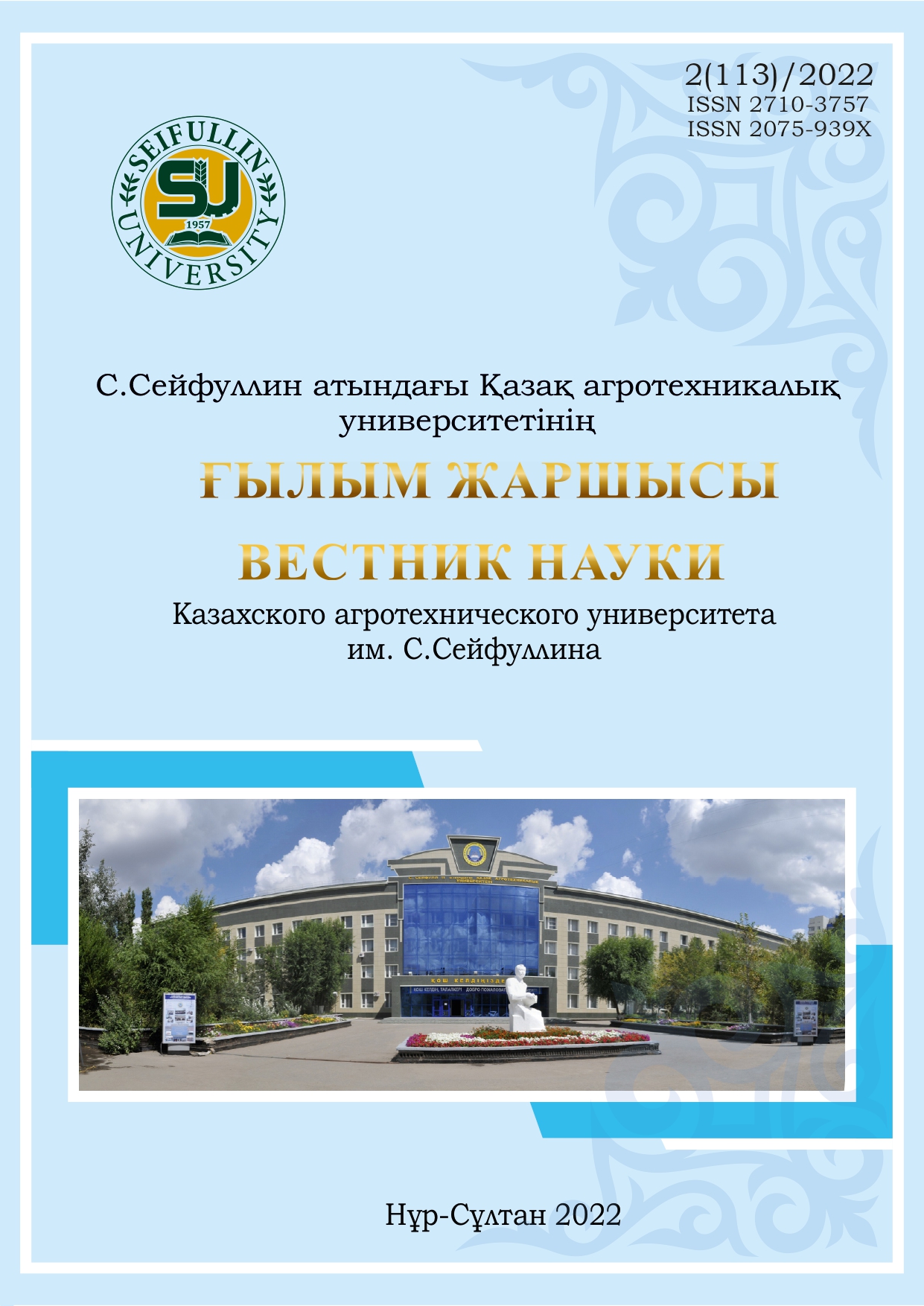FEATURES OF BALANCING NUTRIENTS IN THE SOILS UNDER THE SPRING TRITICALE IN THE CONDITIONS OF TRADITIONAL AND ORGANIC FARMING
DOI:
https://doi.org/10.51452/kazatu.2022.2(113).950Keywords:
soil; nitrogen; phosphorus; potassium; nutrient balance; fertilizer; triticale.Abstract
The article presents the results of a three-year study of the balance of nutrients in the soil in the cultivation of spring triticale (×Triticosecale) under conventional and organic farming. The essence of the balance method was that the content of nitrogen, phosphorus and potassium in fertilizers and seeds was taken into account in the input part of the balance and their removal with the crop - in the output part. The main role in the formation of the balance of nutrients was the yield, which under traditional farming on average for the variants of experience was the fallow - 2,54 t/ha, on stubble - 2,01 t/ha, under organic farming, it was lower at 1,7 and 2,3 times. There were no differences in the content of macro elements in triticale grain between cropping systems, predecessors and test variants and it was 2,53-2,57% for nitrogen, 0,40-0,43 for phosphorus and 0,46-0,48% for potassium with minor variations. Under traditional farming nitrogen balance was positive only in variants N60 and N80 (+13,9 and +53,3 kg/ha), and phosphorus in all variants +20,4 ... +22,1 kg/ha. Potassium balance was negative and amounted to -20,2 ... -21,0 kg/ha. Under organic farming conditions formed a positive balance of macro elements in the soil: for N – +55,1 ... +90,4 kg/ha, for P2O5 – +5,7 ... +7,0 kg/ha and K2O – +92,8 ... +133,5 kg/ha.

